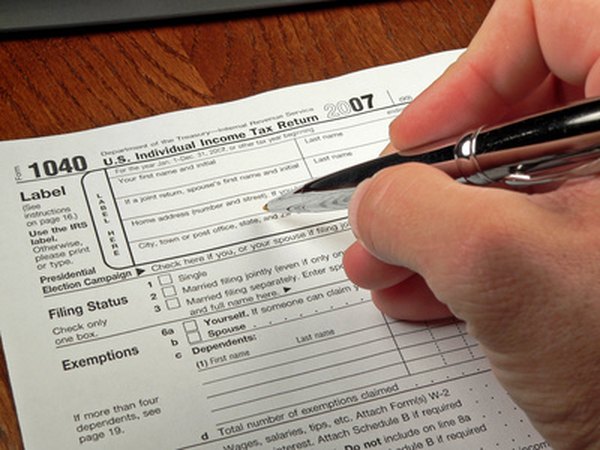How to Fill Out Schedule D For Capital Gains & Losses
Schedule D for capital gains and losses must accompany your tax return.
tax forms image by Chad McDermott from Fotolia.com
If you buy and sell securities such as stocks and bonds, you must fill out a Schedule D to attach to your tax return. This schedule lists your capital gains and losses for the year. In addition, the Internal Revenue Service requires you to fill out an additional form before you fill out your Schedule D. This new requirement went into effect in 2011 and applies to tax years after that.
Separate short-term and long-term trades. You get taxed for securities you hold for one year or less at your regular income rate. For most people, this rate is higher than the capital gains rate. Your long-term trades qualify for the capital gains rate of 15 percent. Separate all of your trades into the two categories of short-term and long-term.
Step 2Fill out Form 8949. You must fill out this form before you fill out Schedule D. On form 8949, give the name of the company associated with the stock, the buy and sell dates, the purchase price and the sale price. This form has separate sections for long-term and short-term trades, so put all of your trades in the proper area.
Step 3Write the totals on Schedule D. Keep your totals for short-term trades separate from those for long-term trades. Schedule D contains the totals from 8949, so make sure your figures match. Note that the total may be either a gain or a loss.
Step 4Fill out Form 1040. Put your totals from Schedule D on line 13 of form 1040. Attach Schedule D and Form 8949 to your Form 1040 so the IRS can verify your figures. Your long-term gains or losses qualify you for a 15 percent tax rate. You can claim up to $3,000 in long-term losses, and then carry any remaining amount over to the next year to write off against long-term gains. Any short-term losses count as write-offs against your regular income.
References
Tips
- If you have more stock or bond trades than will fit on Form 8949, you can attach a worksheet.
Writer Bio
Kevin Johnston writes for Ameriprise Financial, the Rutgers University MBA Program and Evan Carmichael. He has written about business, marketing, finance, sales and investing for publications such as "The New York Daily News," "Business Age" and "Nation's Business." He is an instructional designer with credits for companies such as ADP, Standard and Poor's and Bank of America.

